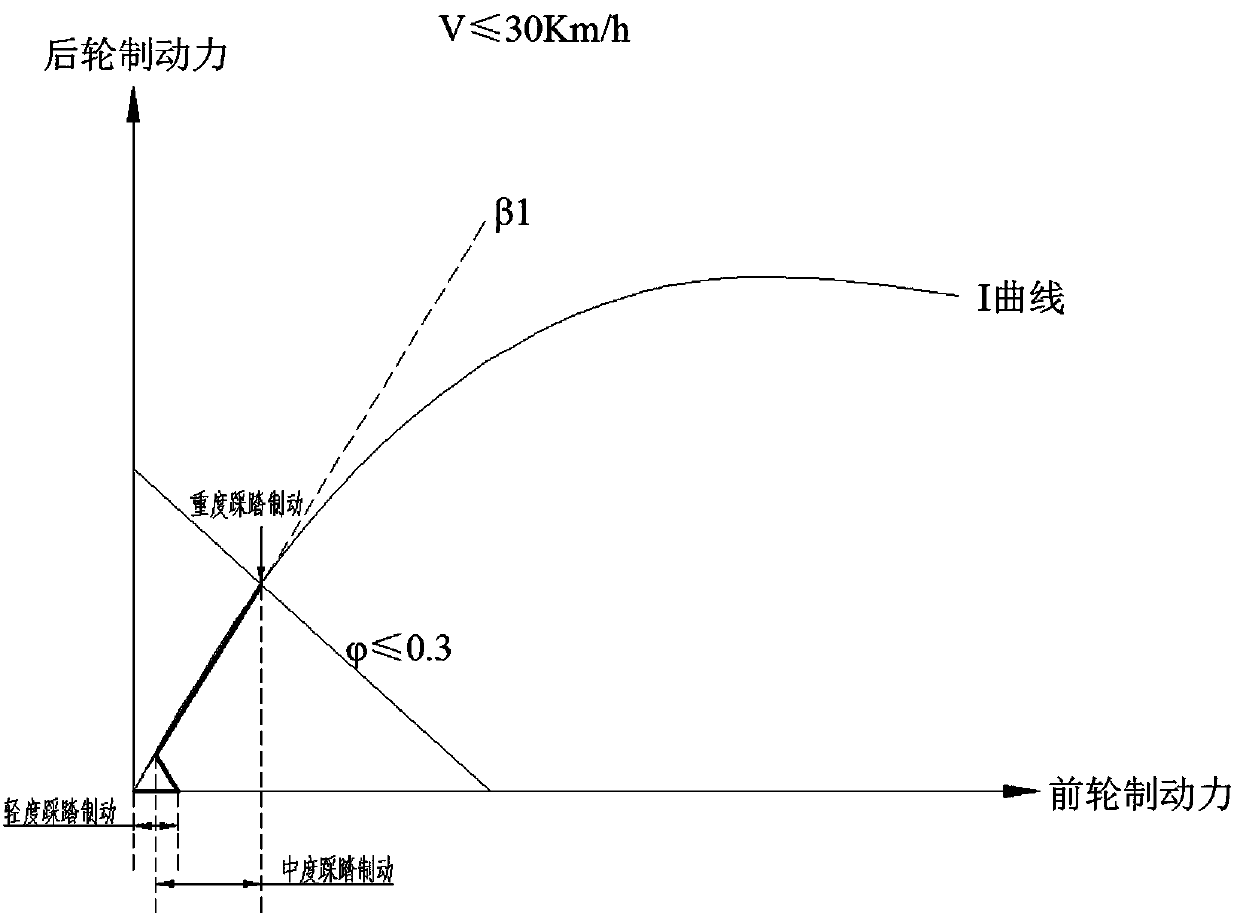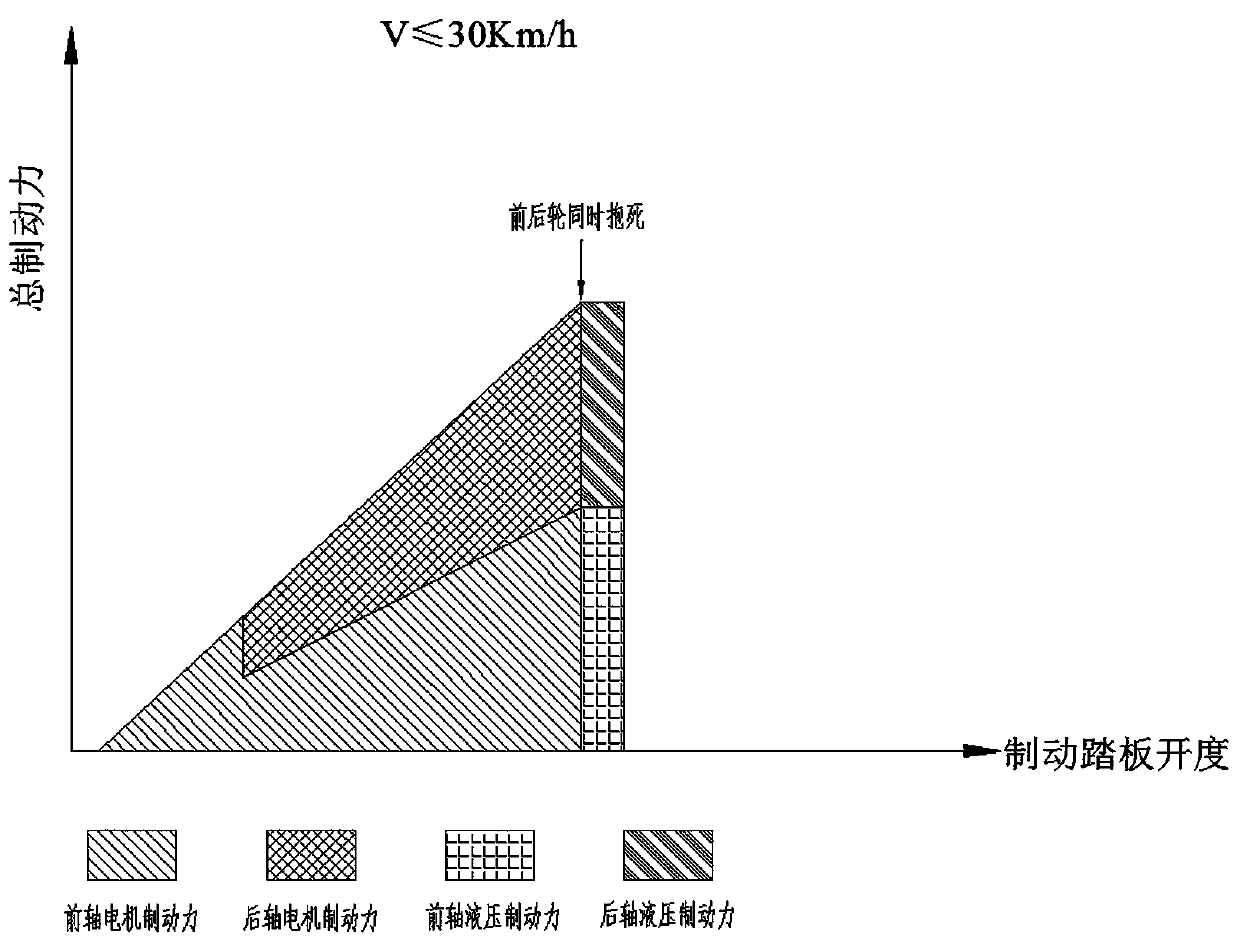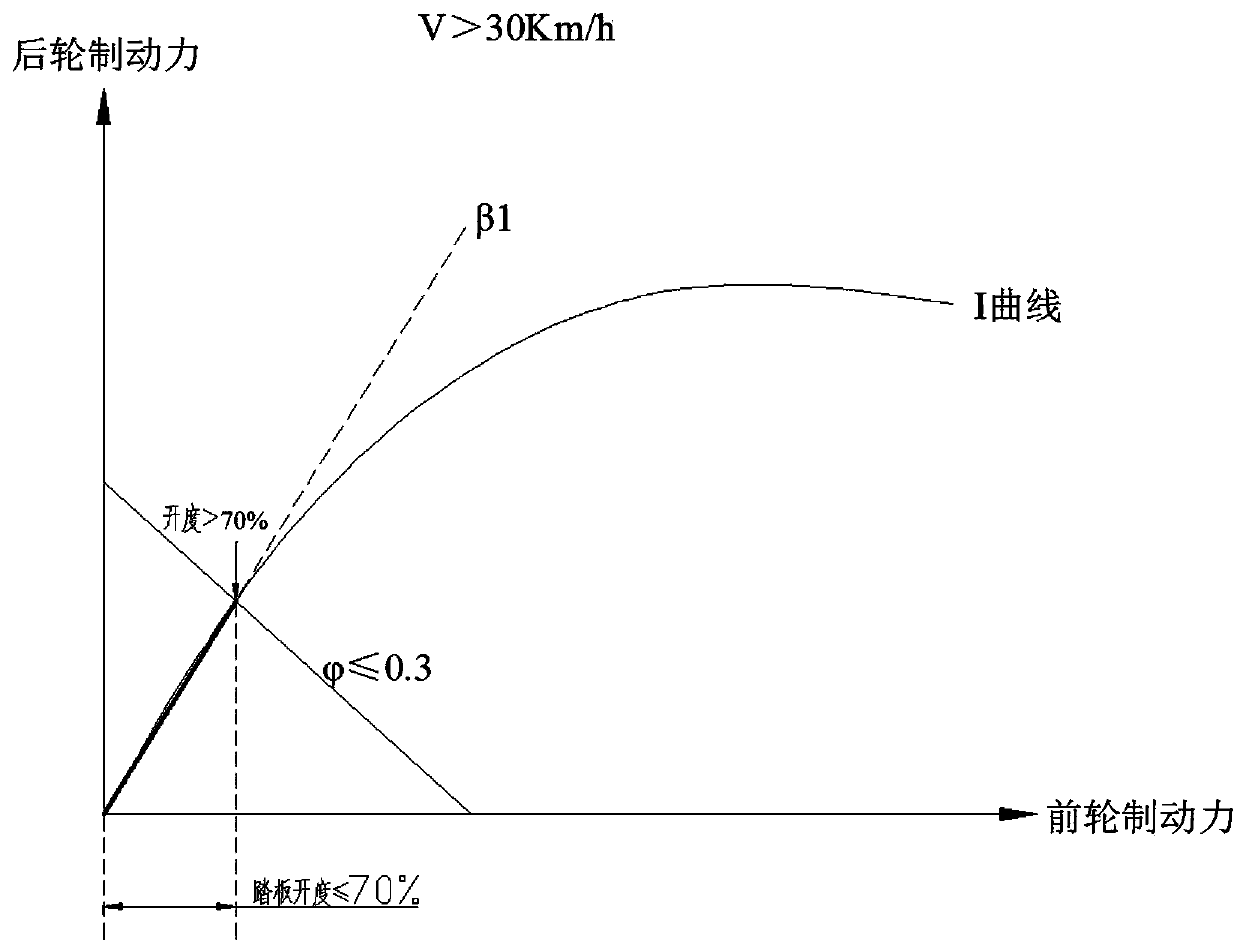High-safety braking energy recovery method for electric vehicle
A braking energy recovery and electric vehicle technology, applied in electric vehicles, electric braking systems, brakes, etc., can solve the problem of insufficient energy loss and collection, and achieve a scientific, effective and safe braking strategy High performance, with optimized effect
- Summary
- Abstract
- Description
- Claims
- Application Information
AI Technical Summary
Problems solved by technology
Method used
Image
Examples
Embodiment 1
[0035] When the road surface adhesion coefficient φ≤0.3 and the vehicle speed v≤30km / h, the driver depresses the brake pedal slightly, the hydraulic brake system does not work, the front clutch is closed, the front axle motor rotates to generate power, and at the same time provides braking torque, and the power generated The electric energy flows into the battery management system through the current regulator, and then the battery management system is imported into the on-board lithium-ion battery, the rear clutch is disconnected, and the rear axle motor does not participate in braking; when the driver moderately steps on the brake pedal, the brake pedal The pressure sensor at the position transmits the signal to the vehicle controller, which is pre-set with the ideal front and rear wheel braking force distribution curve under the vehicle's no-load state, and the road surface recognition module transmits the adhesion coefficient value of the road surface in real time In the ve...
Embodiment 2
[0037] When the road surface adhesion coefficient φ≤0.3, the vehicle speed v>30km / h, and the opening of the driver’s brake pedal is ≤70% of the total opening, the vehicle controller closes the front clutch and the rear clutch at the same time, and outputs instructions to adjust Two current regulators, so that the ratio of the braking force of the front axle motor to the rear axle motor is β 1 , when the driver steps on the brake pedal and the opening is greater than 70% of the total opening, the front clutch and the rear clutch are disconnected, and the vehicle controller activates the hydraulic braking system to lock the front and rear wheels simultaneously. The braking force distribution curves of the front and rear axles and the total braking force-brake pedal opening curve are as follows: image 3 and Figure 4 shown.
Embodiment 3
[0039] When the road surface adhesion coefficient is 0.32 After being distributed to the front and rear axles, whether they are both less than the maximum braking force of the front axle motor and the rear axle motor, if less, then close the front clutch and rear clutch at the same time, adjust the two current regulators, and the vehicle controller according to the adhesion coefficient and the vehicle The ideal front and rear wheel braking force distribution curve under no-load conditions determines the ratio of the rear wheel braking force to the front wheel braking force β 2 , according to β 2 Distribute the braking force of the front axle motor and the rear axle motor to recover energy while maintaining the stability of the car. If the braking force corresponding to the brake pedal opening is according to β 2 After being distributed to the front and rear axles, one or both of them are greater than the maximum braking force of the front axle motor or the rear axle motor, the...
PUM
 Login to View More
Login to View More Abstract
Description
Claims
Application Information
 Login to View More
Login to View More - R&D
- Intellectual Property
- Life Sciences
- Materials
- Tech Scout
- Unparalleled Data Quality
- Higher Quality Content
- 60% Fewer Hallucinations
Browse by: Latest US Patents, China's latest patents, Technical Efficacy Thesaurus, Application Domain, Technology Topic, Popular Technical Reports.
© 2025 PatSnap. All rights reserved.Legal|Privacy policy|Modern Slavery Act Transparency Statement|Sitemap|About US| Contact US: help@patsnap.com



